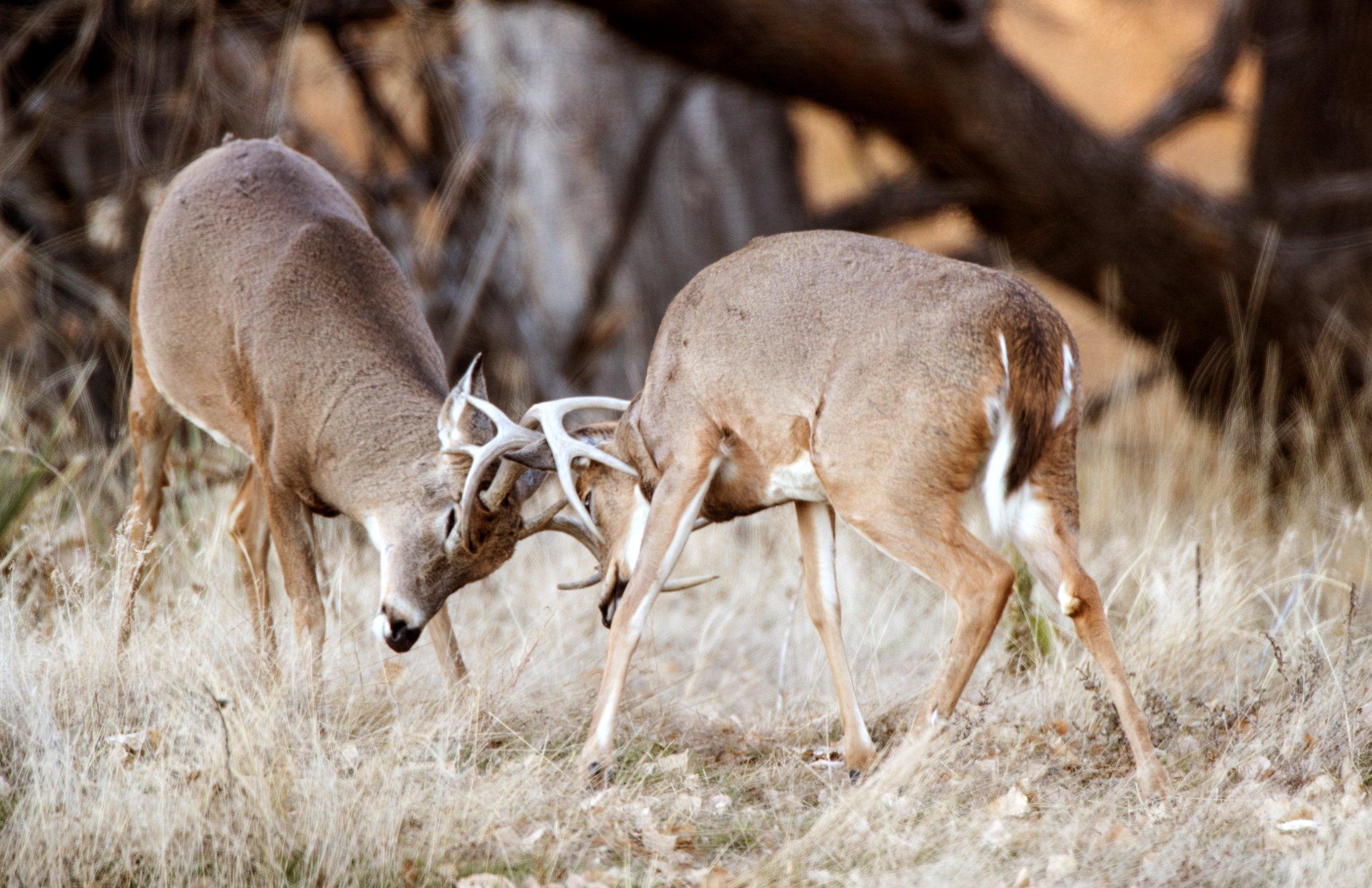Other factors are often more important than antlers

Two bucks square off in a winner-take-all battle for dominance and glory. Image by Russell Graves
A massive 150-inch buck walks into the clearing. Several other bucks meander around, but the big fellow ignores them. Minutes later, a brute-bodied 130-inch scrapper enters the mix and instantly locks eyes with the bigger deer. Their ears pin down, hairs stand on end, and their legs go rigid. The deer begin circling each other, and then they lunge.
Most would assume the larger-antlered deer would emerge victorious. But in a real-life situation captured by Ted Miller of The Hunting Public, antler size didn’t guarantee a win. Although larger antlers often indicate older age — and therefore a greater chance at dominance — it doesn’t make that deer bigger-bodied, meaner, or stronger than the next buck.
Of course, The Hunting Public guys capture some great deer hunting footage. In the video, Miller films two big, mature bucks square off. The smaller-racked deer wins the bout. That example is purely anecdotal and not scientific, but it shows that bigger antlers aren’t the key to being a boss buck.
So what are the most important elements? Attitude, body size, good footing, and fighting technique are more important than antler quality, shape, or size. So, no, boss bucks aren’t always the biggest-antlered bucks. Often, they are the oldest, biggest-bodied deer. Even so, they need the attitude and dominance drive to obtain and maintain their hierarchy status.
How do bucks display and maintain dominance? Numerous ways:
posturing
pinning ears
snort-wheezing
bluff charges
pawing (while in velvet)
turning antlers toward other bucks
all-out fights
more
Interestingly, most bucks sort out much of the pecking order during summer. Deer that cross paths during that time tend to settle those outcomes long before the rut. And as whitetails shift into fall ranges, unfamiliar deer do the same in September and October.
Interestingly, some whitetail biologists and experts theorize that summer-to-fall home range transitions have much to do with dominance. Often, bucks are pushed out of their summer range and move to a nearby property where they play a higher role in the pecking order.
When the rut arrives, the stakes are much higher. Estrous does and raging testosterone spark many fights. Of course, as bucks move even more during the rut, it opens opportunities for them to cross paths with other bucks they don’t know. Naturally, fights between stranger bucks of similar age classes and some involving up-and-coming bucks that think they can dethrone an older deer might occur during the rut.
Deer don’t have personalities in the human sense, but they are individuals. They each exhibit slightly different behaviors. Home range and core areas vary in size. Further, a buck’s temperament, willingness to fight, and drive to participate in the rut influence how dominant a deer will try to be.
That’s why it’s difficult to hoard bucks on a property. Deer need space, and when they don’t feel very dominant, they might shift to neighboring tracts where they are the dominant deer or at least rank higher in the hierarchy.
So, never assume boss bucks are always the biggest deer. And if you hope to hold as many mature deer as possible, design a property in a way that divides it into sections, with numerous hubs of bedding areas and food sources. That way, bucks are less likely to see each other. And they’ll all feel like a boss buck, whether they are or aren’t.
Don’t Miss: HUNTER SHOOTS MONSTER BUCK AFTER HIS TRUCK BURNS DOWN










